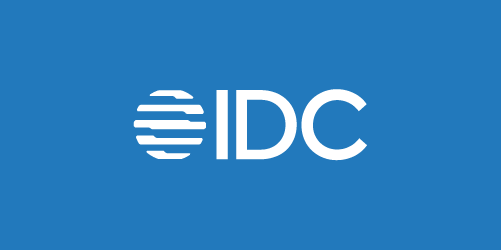Generative AI use cases are AI-powered workloads designed to create content, enhance creativity, automate tasks, and personalize user experiences.
What is Generative AI?
Generative AI (GenAI) is something that many of us use daily, but rarely pause to consider. Beyond romantic couplets, household cleaning tips, and overseas trip planning – generative AI delivers a world of business benefits in numerous use cases. In this post, we’ll take a deep dive into what generative AI can offer the business world.
Simply put, generative AI refers to a class of artificial intelligence models designed to create new content (text, images, music, code, and much more) based on input data. Whereas traditional AI focused on pattern recognition or decision-making, GenAI uses Machine Learning (ML) techniques to produce novel outputs that mimic human creativity.
Generative AI relies on Large Language Models (LLMs) – such as GPT-4 by OpenAI, Claude by Anthropic, and Gemini by Google – that are trained on vast amounts of publicly available data. To respond to user queries more accurately and personally, businesses implement the GenAI framework “Retrieval-Augmented Generation (RAG)” to inject their enterprise LLM with private, internal data from trusted company sources.
Top 10 generative AI use cases for business
Generative AI has become a powerful force that’s driving both innovation and efficiency across the business landscape. As companies face increasing pressure to stay competitive, GenAI solutions empower them to automate more efficiently, create more personalized experiences, improve customer engagement, optimize and streamline operations, and develop new products at an unprecedented rate.
Far from a novelty, GenAI is becoming a cornerstone of modern business strategy, offering tangible benefits that boost productivity, cut costs, and foster creativity at scale. It’s not just a trend but a strategic advantage, helping organizations of all sizes adapt to dynamic market shifts. Here’s a list of the top 10 generative AI use cases for the enterprise in 2025:
1. Fraud detection and security
Generative AI is being applied in finance and cybersecurity to simulate fraudulent activities to improve fraud detection models.
For example, by generating synthetic fraud data, RAG can train LLMs to identify suspicious activity – thus enhancing the accuracy of detection system. Similarly, it can also generate adversarial examples to test security systems, ensuring that they are resilient against cyber threats.
2. Rapid software development
GenAI is being used to reduce development timelines and improve code quality.
For software engineers, AI tools like GitHub Copilot can generate code snippets, debug errors, and even help in building software modules. Such capabilities accelerate the software development process by providing developers with suggestions, templates, and solutions in real time.
3. Automated content creation
Generative AI significantly streamline content creation for marketing, sales, and communications. Businesses are using RAG tools to generate blog posts, social media content, product descriptions, email templates, and more.
Active retrieval-augmented generation reduces the workload for marketing teams, allowing them to focus on strategy while still producing consistent, high-quality content that is tailored to different customer segments or platforms.
4. Personalized marketing campaigns
Businesses use generative AI personalization to create more effective customer experiences, and drive engagement and sales by offering content that resonates directly with individual preferences.
Platforms like e-commerce websites and streaming services offer GenAI-created personalized landing pages and product displays. On retail sites, AI algorithms can analyze user data and generate personalized recommendations, product suggestions, and tailored advertisements in real-time.
5. Adaptive product design
In industries like fashion, automotive, and electronics, generative AI creates new product designs based on input parameters or customer preferences. It can rapidly generate multiple design iterations, helping companies explore diverse product variations and refine prototypes more efficiently.
Such efficiency accelerates the design cycle, reduces time to market and lowers the costs associated with physical prototyping.
6. Supply chain optimization
Generative AI helps businesses optimize their supply chains by predicting demand, optimizing delivery routes, and automating inventory management. It can generate models that predict demand fluctuations based on historical data, weather patterns, market trends and much more.
By helping businesses prevent stock shortages or excesses, GenAI ensures a more efficient supply chain, reduces waste, and improves profitability.
7. Customer service chatbots
Chatbots can handle customer inquiries and provide a 24/7 first-line support. They can generate human-like responses, resolve issues, and guide customers through complex processes like product selection, troubleshooting, or booking.
RAG chatbots enhance the customer experience with generative AI personalization. They also reduce operational costs by eliminating the need for a human in the loop.
8. Sales and lead generation
Generative AI automates lead generation by creating hyper-personalized outreach messages based on a customer’s interests, characteristics, and behavior. It can also be used to draft follow-up emails, create sales pitches, and configure proposals tailored to the needs of different customers.
Together, these capabilities increase sales team productivity and raise conversion rates by enabling more targeted and productive interactions.
9. Financial modeling and forecasting
Finance and accounting professionals use GenAI to create more accurate financial forecasts, reports, and models based on historical data and predictive analytics. With its unique ability to rapidly analyze complex data sets, AI helps businesses identify trends, predict future revenue, and optimize budgeting decisions.
Enterprise RAG offers company leadership previously unobtainable, actionable insights, helping them make more informed financial decisions and grow more profitability.
10. Talent acquisition and HR automation
HR executives count on RAG conversational AI to optimize the recruitment process by creating job descriptions, analyzing candidate resumes, and generating tailored interview questions.
RAG GenAI can match candidates to job openings based on skills and experiences, reducing the time spent screening resumes manually. It also facilitates onboarding by generating personalized training materials and employee guides.
Generative AI Use Cases with GenAI Data Fusion
For any generative AI use case that requires precise, personalized interactions, the K2View solution for Retrieval-Augmented Generation (RAG), GenAI Data Fusion, can help. GenAI Data Fusion uses contextual LLM chain-of-thought prompting to ensure better outputs – for more better outcomes.
GenAI Data Fusion:
-
Accesses customer data in real time, to create more accurate and relevant prompts.
-
Masks sensitive data and PII (Personally Identifiable Information) dynamically.
-
Fields data service access requests and provides recommendations on the fly.
-
Enters enterprise systems – via API, CDC, messaging, or streaming – to collect data from multiple source systems.
GenAI Data Fusion powers your LLM to respond with greater accuracy and relevance than ever before, for any use case.
Discover K2view AI Data Fusion, the best RAG tools
for all your generative AI use cases.
















